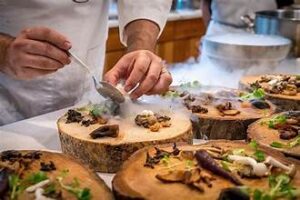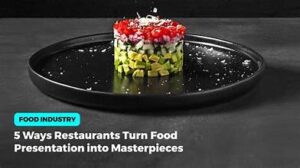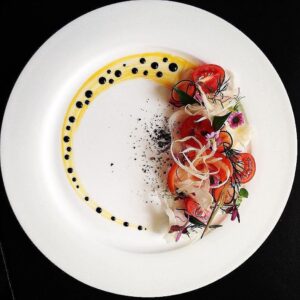
In the culinary world, presentation is as crucial as taste. The way a dish is presented can elevate a meal from ordinary to extraordinary, captivating both the eyes and the palate. If you want to create visually stunning dishes that not only taste great but also look incredible, mastering the art of food presentation is key. Here are essential tips to help you achieve impressive results.
1. Understand the Importance of Presentation
Food presentation is more than just arranging ingredients on a plate. It’s an art form that plays a significant role in enhancing the dining experience. A well-presented dish can increase anticipation, create a sense of occasion, and even impact the perceived taste of the food. It’s essential for making a memorable impression, whether you’re serving a casual meal or a gourmet feast.
2. Choose the Right Plate
The choice of plate can make a significant difference in food presentation. Opt for plates that complement the colors and textures of your dish. White plates are a popular choice because they provide a clean canvas that allows vibrant colors to stand out. However, don’t be afraid to experiment with different shapes and sizes to create unique presentations.
3. Use Color Wisely
Color adds vibrancy and appeal to your dish. Incorporate a variety of colorful ingredients to create a visually appealing plate. Fresh herbs, vibrant vegetables, and colorful garnishes can make your dish look more appetizing. Be mindful of color contrast to ensure that each element stands out and contributes to a balanced overall presentation.
4. Pay Attention to Portion Sizes
Portion control is crucial for an aesthetically pleasing presentation. Ensure that your portions are neither too large nor too small. A well-proportioned plate helps in maintaining balance and makes the dish look more refined. Use a ring mold or a cookie cutter to shape portions neatly, if necessary.
5. Create Height and Dimension
Adding height and dimension to your presentation can make the dish more dynamic. Stack or layer ingredients to create visual interest. For example, stack slices of vegetables or layer different components of the dish to add height. This technique adds a sense of sophistication and can make the dish appear more gourmet.
6. Garnish with Purpose
Garnishes should enhance the dish, not overwhelm it. Choose garnishes that complement the flavors and ingredients of the main dish. Fresh herbs, edible flowers, or a sprinkle of spices can add a finishing touch that elevates the presentation. Avoid over-garnishing; keep it simple and elegant.
7. Maintain Cleanliness
A clean plate is essential for a professional presentation. Wipe any spills or smudges from the edges of the plate before serving. Clean presentation not only looks better but also shows attention to detail and professionalism.
8. Play with Texture
Incorporate a variety of textures to make your dish more interesting. Combine crunchy elements with smooth or creamy components to create a pleasing contrast. Textural variety can enhance the overall eating experience and make the dish more visually engaging.
9. Consider the Arrangement
Arrange components of the dish in a way that guides the eye. Use the rule of thirds to position the main elements of the dish in an aesthetically pleasing manner. Avoid placing everything in the center; instead, create a focal point and arrange surrounding elements to support and enhance it.
10. Experiment and Innovate
Food presentation is a creative process, and there are no strict rules. Don’t be afraid to experiment with different plating techniques and styles. Innovate by using unusual serving dishes, incorporating unique garnishes, or trying new plating techniques. The key is to keep experimenting until you find a presentation style that suits your culinary creations.
11. Incorporate Seasonal Ingredients
Using seasonal ingredients not only enhances the flavor but also adds visual appeal. Seasonal fruits and vegetables often come in vibrant colors and unique textures that can make your dish stand out. Highlighting these ingredients in your presentation can also reflect your commitment to fresh, high-quality produce.
12. Use Sauces and Drizzles Thoughtfully
Sauces and drizzles can add color and flavor to your dish, but they should be used thoughtfully. Consider the placement and quantity of sauces to avoid overwhelming the dish. Drizzle sauces artistically or use a squeeze bottle for precise application. This technique can create elegant patterns and enhance the visual appeal of your dish.
Conclusion
Mastering the art of food presentation requires practice and creativity. By understanding the importance of presentation, choosing the right plate, using color wisely, and incorporating various techniques, you can transform your dishes into visually stunning culinary creations. Remember, presentation is not just about aesthetics but also about enhancing the overall dining experience. Keep experimenting, stay creative, and let your dishes shine.

